-
 Bitcoin
Bitcoin $83,733.4061
-1.29% -
 Ethereum
Ethereum $1,594.3479
-1.74% -
 Tether USDt
Tether USDt $1.0000
0.01% -
 XRP
XRP $2.0826
-1.94% -
 BNB
BNB $581.9915
-0.41% -
 Solana
Solana $126.1154
-2.12% -
 USDC
USDC $0.9999
-0.01% -
 TRON
TRON $0.2513
0.07% -
 Dogecoin
Dogecoin $0.1553
-2.14% -
 Cardano
Cardano $0.6128
-3.26% -
 UNUS SED LEO
UNUS SED LEO $9.3174
-1.22% -
 Chainlink
Chainlink $12.3521
-1.81% -
 Avalanche
Avalanche $18.8671
-5.22% -
 Stellar
Stellar $0.2363
-1.27% -
 Toncoin
Toncoin $2.9018
0.31% -
 Shiba Inu
Shiba Inu $0.0...01172
-0.86% -
 Sui
Sui $2.0951
-3.63% -
 Hedera
Hedera $0.1580
-4.98% -
 Bitcoin Cash
Bitcoin Cash $319.4231
-0.81% -
 Litecoin
Litecoin $76.0657
-1.99% -
 Polkadot
Polkadot $3.5459
-2.73% -
 Dai
Dai $1.0000
0.01% -
 Bitget Token
Bitget Token $4.2560
-1.12% -
 Hyperliquid
Hyperliquid $15.2255
-5.33% -
 Ethena USDe
Ethena USDe $0.9992
0.01% -
 Pi
Pi $0.6236
-15.50% -
 Monero
Monero $216.8844
2.23% -
 Uniswap
Uniswap $5.2307
-1.66% -
 OKB
OKB $52.1135
1.06% -
 Pepe
Pepe $0.0...07120
-2.00%
How can mining machines deal with the increased mining difficulty?
To handle increased mining difficulty, miners can upgrade to high-performance ASICs like the Bitmain Antminer S19, optimize existing hardware, join mining pools, and adjust strategies.
Apr 15, 2025 at 12:56 am
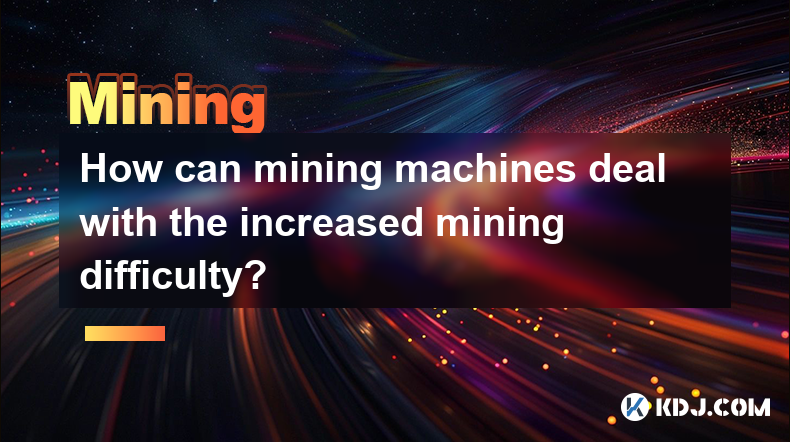
Mining machines are crucial components of the cryptocurrency ecosystem, particularly for networks like Bitcoin that rely on proof-of-work (PoW) consensus mechanisms. As the mining difficulty increases, miners must adapt their strategies and equipment to maintain profitability. This article explores various ways in which mining machines can deal with the increased mining difficulty, offering insights into hardware upgrades, operational adjustments, and strategic considerations.
Understanding Mining Difficulty
Mining difficulty is a parameter that adjusts the complexity of the cryptographic puzzle that miners must solve to validate transactions and add new blocks to the blockchain. It is designed to maintain a consistent block time, typically around 10 minutes for Bitcoin. When more miners join the network or existing miners increase their hashing power, the difficulty increases to ensure the block time remains stable.
To deal with increased mining difficulty, miners need to enhance their computational capabilities. This can be achieved through hardware upgrades, optimizing existing equipment, and adjusting mining strategies.
Upgrading Mining Hardware
One of the most direct ways to handle increased mining difficulty is by upgrading mining hardware. Application-Specific Integrated Circuits (ASICs) are the go-to choice for Bitcoin mining due to their superior hashing power and energy efficiency compared to general-purpose hardware like CPUs and GPUs.
- Choosing the Right ASIC: When selecting an ASIC, miners should consider factors such as hash rate, power consumption, and cost. Models like the Bitmain Antminer S19 and MicroBT WhatsMiner M30S++ are popular choices due to their high performance.
- Regular Upgrades: As newer ASIC models are released, miners should consider upgrading to maintain a competitive edge. This involves assessing the cost-benefit ratio of new hardware against the current market conditions and mining difficulty.
- Second-Hand Market: Miners can also explore the second-hand market for ASICs, which can offer cost-effective solutions for those looking to upgrade without breaking the bank.
Optimizing Existing Hardware
For miners who cannot afford frequent hardware upgrades, optimizing existing equipment can be a viable strategy. This involves tweaking settings and ensuring the mining rigs operate at peak efficiency.
- Overclocking: Overclocking can increase the hash rate of mining machines, but it also increases power consumption and heat output. Miners should carefully monitor temperatures and ensure adequate cooling to prevent hardware damage.
- Undervolting: Conversely, undervolting can reduce power consumption without significantly impacting the hash rate. This method can improve the overall efficiency of the mining operation.
- Regular Maintenance: Keeping mining rigs clean and well-maintained can prevent performance degradation over time. This includes dusting fans, checking for loose connections, and ensuring all components are functioning correctly.
Joining Mining Pools
Another way to deal with increased mining difficulty is by joining a mining pool. Mining pools allow individual miners to combine their computational resources and share the rewards, increasing the likelihood of successfully mining a block.
- Selecting a Pool: Miners should choose a reputable pool with a good track record and fair reward distribution. Popular pools include Slush Pool, Antpool, and F2Pool.
- Pool Fees: Be aware of the fees charged by the pool, as they can impact overall profitability. Some pools charge a percentage of the rewards, while others may have a flat fee structure.
- Pool Payouts: Understand the pool's payout structure, whether it's Pay-Per-Share (PPS), Proportional, or another method, and how it aligns with your mining goals.
Adjusting Mining Strategies
Adapting mining strategies can also help miners cope with increased difficulty. This includes diversifying mining operations and staying informed about market trends.
- Diversifying Cryptocurrencies: Miners can mine different cryptocurrencies that may have lower difficulty levels or more favorable reward structures. For instance, mining altcoins like Litecoin or Ethereum can provide additional income streams.
- Monitoring Market Conditions: Keeping an eye on cryptocurrency prices and mining difficulty trends can help miners make informed decisions about when to mine and when to hold off.
- Energy Cost Management: Since electricity costs are a significant expense in mining, miners should seek ways to reduce these costs, such as using renewable energy sources or relocating to areas with lower electricity rates.
Leveraging Software Solutions
Software can play a crucial role in optimizing mining operations and dealing with increased difficulty. Mining software can help miners manage their rigs more efficiently and automate various tasks.
- Choosing the Right Software: Popular mining software includes CGMiner, EasyMiner, and BFGMiner. Each has its own set of features and compatibility with different hardware.
- Automating Operations: Using software to automate tasks like starting and stopping rigs, monitoring temperatures, and adjusting settings can save time and improve efficiency.
- Remote Management: Many mining software solutions offer remote management capabilities, allowing miners to monitor and control their operations from anywhere.
Frequently Asked Questions
Q: Can mining difficulty decrease, and if so, how can miners benefit from it?
A: Yes, mining difficulty can decrease if the total network hash rate drops significantly. Miners can benefit from this by continuing to mine with their existing hardware, as the reduced difficulty makes it easier to solve the cryptographic puzzles and earn rewards.
Q: How do miners calculate the break-even point for new mining hardware?
A: Miners calculate the break-even point by dividing the total cost of the hardware by the daily net profit (revenue minus operational costs). This helps determine how long it will take to recoup the investment in new equipment.
Q: Are there any risks associated with overclocking mining hardware?
A: Yes, overclocking can lead to increased heat generation, which may cause hardware damage if not properly managed. It also increases power consumption, potentially reducing overall profitability if electricity costs are high.
Q: How can miners stay updated on changes in mining difficulty?
A: Miners can stay updated by following cryptocurrency news websites, joining mining forums and communities, and using mining software that provides real-time data on network conditions and difficulty adjustments.
Disclaimer:info@kdj.com
The information provided is not trading advice. kdj.com does not assume any responsibility for any investments made based on the information provided in this article. Cryptocurrencies are highly volatile and it is highly recommended that you invest with caution after thorough research!
If you believe that the content used on this website infringes your copyright, please contact us immediately (info@kdj.com) and we will delete it promptly.
- Synthetic Stablecoin Issuer Ethena Labs Shuts Down Operations in Germany
- 2025-04-16 10:15:20
- Make no mistake – Pulsz slots are top-notch
- 2025-04-16 10:15:20
- Pre-draft, Paige Bueckers Dazzled in a Brown Crystal-embellished Power Suit
- 2025-04-16 10:10:13
- As Q2 begins, crypto markets are showing signs of renewed optimism — and with it, fresh opportunities for strategic investment.
- 2025-04-16 10:10:13
- Top 3 Cryptocurrencies to Buy Right Now (April 15th)
- 2025-04-16 10:05:12
- Ethereum (ETH) Shows Early Signs of Recovery as Whales Accumulate
- 2025-04-16 10:05:12
Related knowledge
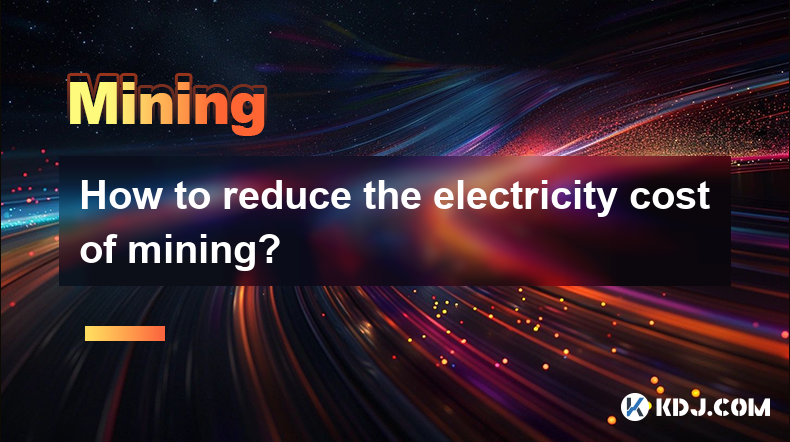
How to reduce the electricity cost of mining?
Apr 16,2025 at 08:42am
Mining cryptocurrencies, particularly Bitcoin, is an energy-intensive process that can lead to significant electricity costs. However, there are several strategies that miners can employ to reduce these expenses and make their operations more cost-effective. In this article, we will explore various methods to minimize the electricity cost of mining. Cho...
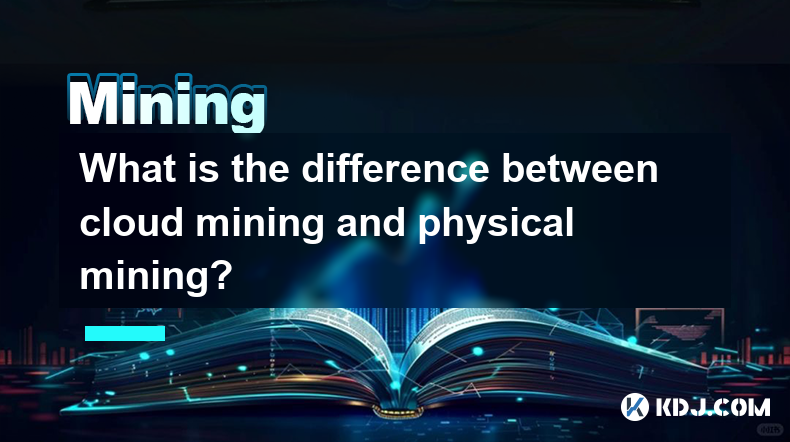
What is the difference between cloud mining and physical mining?
Apr 16,2025 at 01:49am
What is the difference between cloud mining and physical mining? In the world of cryptocurrencies, mining is the process by which new coins are generated and transactions are verified and added to the blockchain. There are two primary methods of mining: cloud mining and physical mining. Understanding the differences between these two approaches can help...
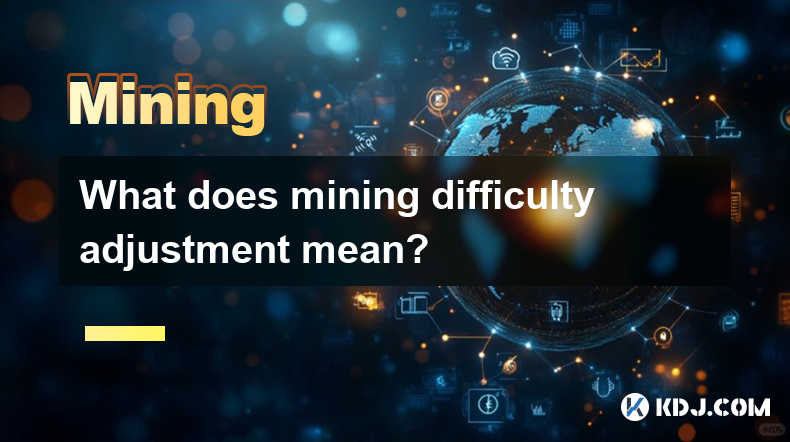
What does mining difficulty adjustment mean?
Apr 16,2025 at 12:42am
What does mining difficulty adjustment mean? Mining difficulty adjustment is a crucial mechanism in blockchain networks, particularly in Proof of Work (PoW) systems like Bitcoin. It ensures that the rate at which new blocks are added to the blockchain remains consistent, despite fluctuations in the total computational power (hash rate) of the network. T...
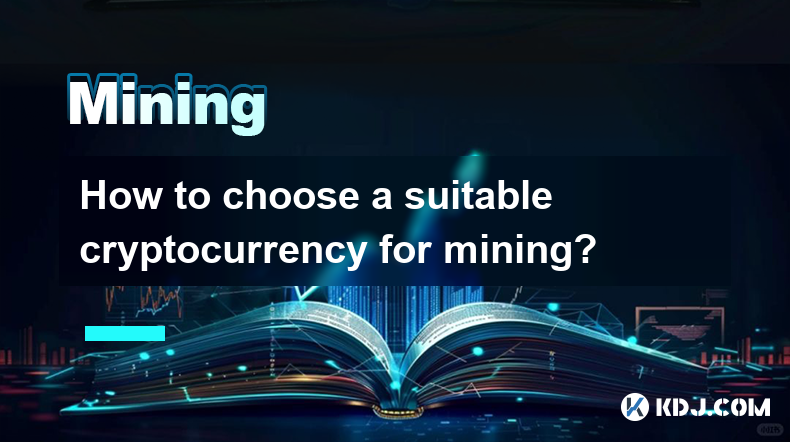
How to choose a suitable cryptocurrency for mining?
Apr 16,2025 at 10:15am
Choosing a suitable cryptocurrency for mining involves several considerations that can impact your profitability and efficiency. Mining cryptocurrencies can be a rewarding venture, but it requires careful planning and research. In this article, we will explore the key factors to consider when selecting a cryptocurrency for mining, ensuring you make an i...
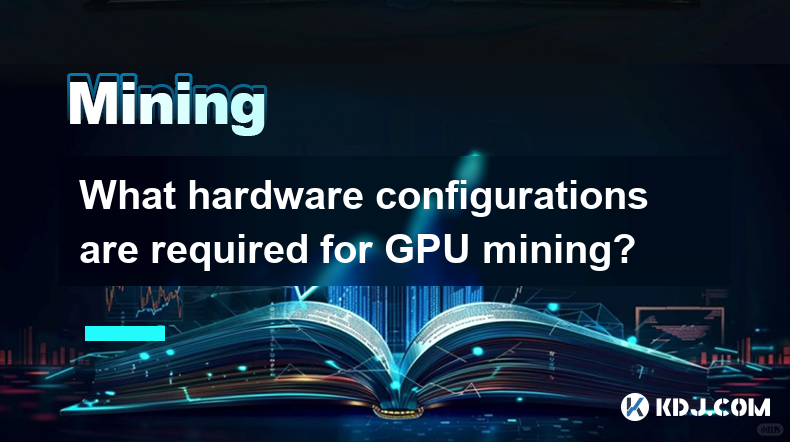
What hardware configurations are required for GPU mining?
Apr 16,2025 at 09:21am
GPU mining has become a popular method for cryptocurrency enthusiasts to mine various cryptocurrencies, such as Ethereum, Ravencoin, and others. To successfully engage in GPU mining, it is essential to understand the hardware configurations required to maximize efficiency and profitability. This article will delve into the specifics of what you need to ...
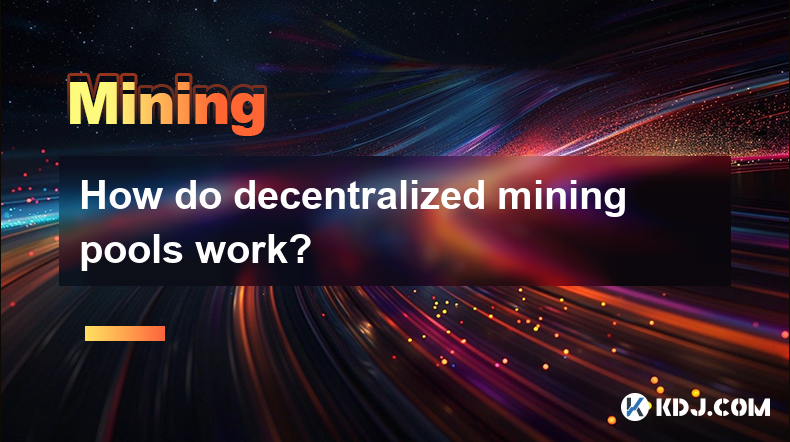
How do decentralized mining pools work?
Apr 16,2025 at 05:42am
Decentralized mining pools represent a significant evolution in the world of cryptocurrency mining, offering a more democratic and transparent approach compared to traditional centralized pools. In this article, we will explore the mechanics of decentralized mining pools, their benefits, and how they operate within the cryptocurrency ecosystem. What are...

How to reduce the electricity cost of mining?
Apr 16,2025 at 08:42am
Mining cryptocurrencies, particularly Bitcoin, is an energy-intensive process that can lead to significant electricity costs. However, there are several strategies that miners can employ to reduce these expenses and make their operations more cost-effective. In this article, we will explore various methods to minimize the electricity cost of mining. Cho...

What is the difference between cloud mining and physical mining?
Apr 16,2025 at 01:49am
What is the difference between cloud mining and physical mining? In the world of cryptocurrencies, mining is the process by which new coins are generated and transactions are verified and added to the blockchain. There are two primary methods of mining: cloud mining and physical mining. Understanding the differences between these two approaches can help...

What does mining difficulty adjustment mean?
Apr 16,2025 at 12:42am
What does mining difficulty adjustment mean? Mining difficulty adjustment is a crucial mechanism in blockchain networks, particularly in Proof of Work (PoW) systems like Bitcoin. It ensures that the rate at which new blocks are added to the blockchain remains consistent, despite fluctuations in the total computational power (hash rate) of the network. T...

How to choose a suitable cryptocurrency for mining?
Apr 16,2025 at 10:15am
Choosing a suitable cryptocurrency for mining involves several considerations that can impact your profitability and efficiency. Mining cryptocurrencies can be a rewarding venture, but it requires careful planning and research. In this article, we will explore the key factors to consider when selecting a cryptocurrency for mining, ensuring you make an i...

What hardware configurations are required for GPU mining?
Apr 16,2025 at 09:21am
GPU mining has become a popular method for cryptocurrency enthusiasts to mine various cryptocurrencies, such as Ethereum, Ravencoin, and others. To successfully engage in GPU mining, it is essential to understand the hardware configurations required to maximize efficiency and profitability. This article will delve into the specifics of what you need to ...

How do decentralized mining pools work?
Apr 16,2025 at 05:42am
Decentralized mining pools represent a significant evolution in the world of cryptocurrency mining, offering a more democratic and transparent approach compared to traditional centralized pools. In this article, we will explore the mechanics of decentralized mining pools, their benefits, and how they operate within the cryptocurrency ecosystem. What are...
See all articles























































































